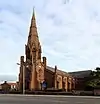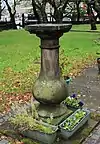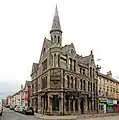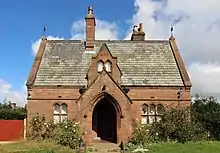Grade II listed buildings in Liverpool-L4
Liverpool is a city and port in Merseyside, England, which contains many listed buildings. A listed building is a structure designated by English Heritage of being of architectural and/or of historical importance and, as such, is included in the National Heritage List for England. There are three grades of listing, according to the degree of importance of the structure. Grade I includes those buildings that are of "exceptional interest, sometimes considered to be internationally important"; the buildings in Grade II* are "particularly important buildings of more than special interest"; and those in Grade II are "nationally important and of special interest". Very few buildings are included in Grade I — only 2.5% of the total. Grade II* buildings represent 5.5% of the total, while the great majority, 92%, are included in Grade II.[1]
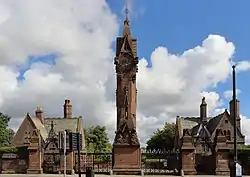 The main entrance to Anfield Cemetery, noted as the burial location of Jem Mace and Bill Shankly amongst others | |
| Listed buildings in Liverpool | |
|---|---|
| Grade I listed buildings | |
| Grade II* listed buildings | |
| Grade II listed buildings: | |
Liverpool contains more than 1,550 listed buildings, of which 28 are in Grade I, 109 in Grade II*, and the rest in Grade II.[lower-alpha 1] This list contains the Grade II listed buildings in the L4 postal district of Liverpool. This area lies to the northeast of the centre of the city, and is mainly residential. It also contains Stanley Park, and Anfield Cemetery, both of which contain listed buildings. Stanley Park and Anfield Cemetery both are registered in the National Register of Historic Parks and Gardens at Grade II*.[2][3] The listed buildings in the park include bridges, walls, shelters, and pavilions. Those in the cemetery include the entrances, lodges, the catacombs, the chapel, the crematorium, and a monument. The postal district also contains part of Walton, formerly a separate town, and now a suburb of Liverpool. The listed building here include churches and associated buildings, houses, and public houses.
Grade II listed buildings from other areas in the city can be found through the box on the right, along with the lists of the Grade I and Grade II* buildings in the city.
Buildings
See alsoReferencesNotes
Citations
Sources
External links |


















